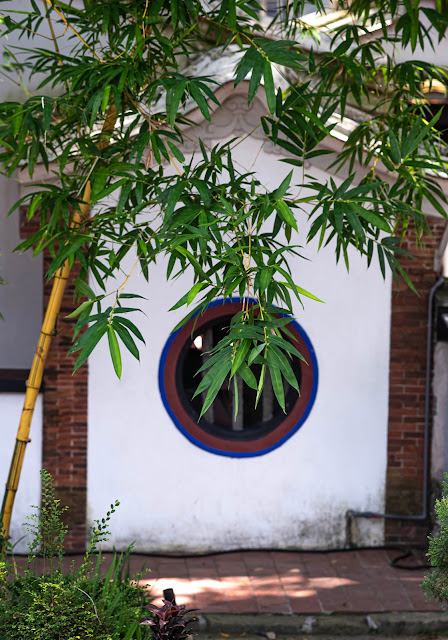 |
| Qilan Wenshan Baozhong |
So, the third time was a charm and I was eventually allowed into the gardens! And my reward was having the park almost all for myself! No tourists, no group touring with a guide talking into a shrill microphone, no curious people taking furtive glimpses at my Chaxi. It was simply quiet and beautiful!
I could peacefully go to my favorite spots to prepare my Qilan Baozhong from Wenshan. (Sometimes spots can be taken when there are many visitors, which is why I avoid weekends). The flowers on my Chaxi are weed that was growing, unwanted, near this table located under the shade of a magnificent banyan tree. A light breeze helped lower down the temperature and the fresh, zesty Wenshan Baozhong felt like the perfect companion on warm day!
I could peacefully go to my favorite spots to prepare my Qilan Baozhong from Wenshan. (Sometimes spots can be taken when there are many visitors, which is why I avoid weekends). The flowers on my Chaxi are weed that was growing, unwanted, near this table located under the shade of a magnificent banyan tree. A light breeze helped lower down the temperature and the fresh, zesty Wenshan Baozhong felt like the perfect companion on warm day!
In every direction, it looks like a Chinese painting. I particularly love the sight of this tall bamboo in front of a round window. What are these bamboo leaves hiding? Or who are they hiding? Am I really alone in the mansion of Taiwan's richest family during the mid 19th century? Let's have a peak!
I wasn't alone! These 2 young ladies seem to have escaped from the red chamber! Are they the powerful Wang Xi Feng and the lovely Xue Bao Chai or the talented Lin Dai Yu and the lonely Shi Xiang Yun?
It's such a delight to see this magic happen again and again here! People love to dress in traditional clothes in this Chinese garden. This historical landsite transports us in a beautiful past where poetry and tea are in their natural element!




























